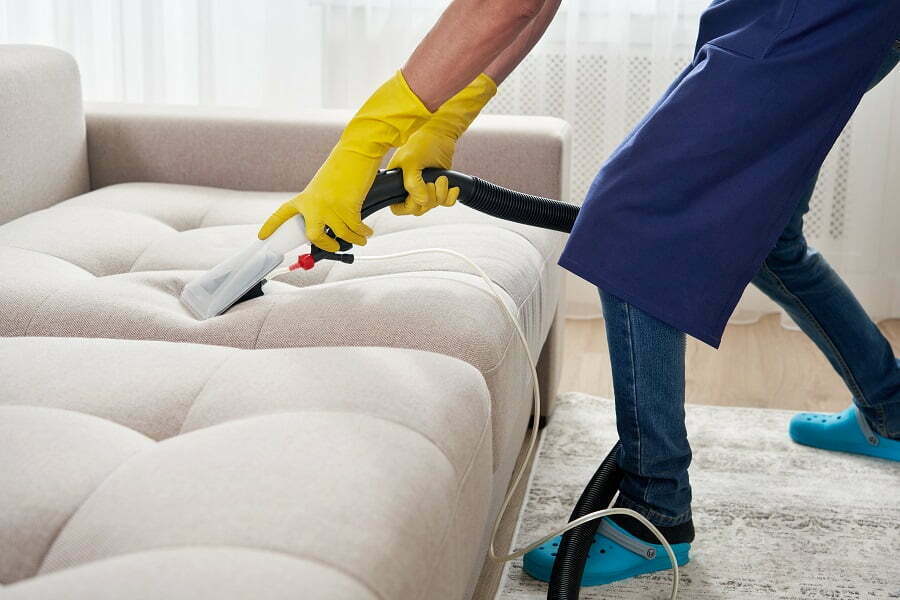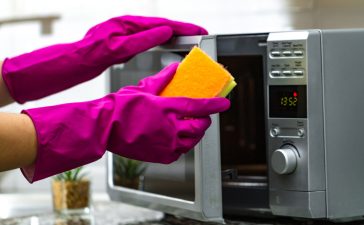Step-by-Step Instructions for Using a Steam Cleaner

If you’re searching for a potent and efficient method to perform a thorough cleaning of various surfaces within your home, a steam cleaner can become your most valuable companion. These versatile machines harness high-temperature steam to adeptly eliminate dirt, grime, and even stubborn stains from a diverse array of surfaces. Whether you’re dealing with floors, mattresses, upholstery, a stove hood, or bathroom tiles, a steam cleaner is equipped to tackle the most challenging accumulations of dirt and grime without the necessity of harsh chemical agents. Here’s what you need to understand to safely and effectively employ a steam cleaner for sanitizing your home.
What Is a Steam Cleaner? And How Does it Work?
A steam cleaner is a device that elevates water to elevated temperatures, usually ranging from 200°F to 300°F (93°C to 148°C), generating a pressurized stream of steam channeled through a nozzle or brush attachment. This intense heat is effective not only at eliminating soap scum, grease, and limescale but also at sanitizing fabrics and eliminating mold, bacteria, and mildew.
Steam cleaners come in three main variations: canister, upright or mop, and handheld. They are equipped with various cleaning attachments, including nozzles, extension wands, brushes, squeegee attachments, and fabric attachments.
Here’s a breakdown of how a typical steam cleaner operates:
Water Heating: Within the device, there is a sealed water reservoir that heats the water to high temperatures. This heating process generates pressurized steam, which is prepared to dissolve, disinfect, and eliminate dirt and grime.
Steam Vapor: Once the hot steam vapor is generated, it is pressurized through a nozzle or attachment in a powerful stream. The higher the steam temperature, the lower the likelihood of streaks or moisture damage.
Cleaning Action: When the steam comes into contact with a surface, it effectively loosens dirt, stubborn stains, and troublesome bacteria. The pressure dislodges and lifts contaminants from the surface, making it easy to wipe away residue without the need for harsh chemical cleaners.
Sanitization: Thanks to the extremely high temperatures, steam cleaners are capable of sanitizing hard-to-reach areas. Household bacteria, germs, and dust mites are instantly eliminated on contact, leaving surfaces clean and hygienic. Since the moisture evaporates rapidly, there’s no need for suction. However, to remove the dirt and allergens, you may need to vacuum, wipe, sweep, or mop the treated area afterward.
What Can You Clean with a Steam Cleaner?
Steam cleaners are versatile tools capable of cleaning a wide array of surfaces and items. It’s crucial to consult the manufacturer’s instructions to determine which surfaces can be cleaned and at what temperature. Common surfaces that can be effectively cleaned using a steam cleaner include:
Bathroom Surfaces
Steam cleaners are highly effective for cleaning and sanitizing bathroom surfaces such as non-painted tiles, grout, and fixtures. If your shower and bathtub are plagued by excessive soap scum and limescale buildup, a steam cleaner can assist in loosening and removing both without the need for harsh chemicals.
Carpet and Upholstery
Steam cleaning is a valuable method for revitalizing carpets, rugs, and upholstered furniture, effectively eliminating dirt, allergens, and unpleasant odors. However, it’s important to exercise caution when dealing with delicate, antique, or sensitive fabrics such as silk or Persian rugs.
Clothes
Steam cleaners can effectively eliminate wrinkles and spot-clean delicate clothing items. Steam cleaning offers advantages superior to traditional ironing, as it eliminates concerns about fabric burns or the lingering smell of metal or starch.
Glass, Windows, and Mirrors
Spores and bacteria frequently reside in the crevices of window and door frames. A steam cleaner can swiftly eliminate them.
Hardwood and Tile Floors
Steam cleaners are proficient at loosening and removing grime from various types of flooring surfaces. They can also effectively eliminate sticky, viscous residues from tile grout. Nevertheless, it’s crucial to refer to the manufacturer’s guidelines for your particular flooring type.
Kitchen Appliances
Steam is effective in dissolving grease and food residue on stovetops, ovens, and microwaves. It also serves as a disinfectant, preventing food contamination. However, it’s important to ensure that all appliances are unplugged before cleaning.
Mattresses and Bedding
For eliminating dust mites and allergens from mattresses, pillows, and curtains, a steam cleaner is an excellent choice. It can eliminate mold, mildew, and dust mites. Moreover, it can effectively eradicate bed bugs and their eggs on the surface of mattresses, rugs, and cushions. However, it may not reach those that are deeper than an inch below the surface. In the case of a bed bug infestation, professional treatment is advisable.
What Should You Avoid Steam Cleaning?
Steam cleaners rely on heat and moisture. It’s advisable to refrain from using them on surfaces that may warp, melt, or deform when exposed to excessive heat and water. Exercise caution when considering steam cleaning for these surfaces:
Delicate Fabrics
Exercise caution when dealing with delicate fabrics like silk and satin, as high temperatures and moisture can potentially damage them.
Electrical Appliances
Avoid using steam on electrical outlets, switches, and appliances that are still connected to a power source. Pressurized steam can lead to moisture accumulation, heat damage, short circuits, and condensation. Additionally, the minerals and impurities present in tap water may result in long-term corrosion if surfaces are not properly wiped down with microfiber or cotton cloths after steam cleaning. It’s important to note that using a steam cleaner may also void warranties for certain appliances that explicitly list steam cleaning as an improper cleaning method.
Unsealed Hardwood, Laminate, and Porous Flooring
Steam can be detrimental to unsealed or inadequately sealed hardwood floors, most types of laminate flooring, stucco, marble, and brick surfaces. These materials are porous, allowing water to penetrate small cracks and potentially causing warping, swelling, or breakage. Always refer to the manufacturer’s recommendations to determine if there are safer cleaning methods for these materials.
You Might Also Like
How to Clean a Velvet Couch—Because the Glamour Upholstery Can Get Dirty
A velvet couch exudes luxury and introduces a touch of sophistication and rich color to any living space. While it...
If Your Home Smells Off, Look Into These 8 Problem Areas
You know that fresh, citrus-infused aroma that welcomes you when you step into the luxurious lobby of a high-end hotel?...
Experts Reveal How to Clean a Microwave Easily
Knowing how to clean a microwave is an essential task. When done correctly, it helps prevent unpleasant odors and the...
Interior Designers’ Rules and Tips for Furniture Arrangement
The living room holds a special place in our homes, serving as a versatile space where we unwind, entertain, and...











